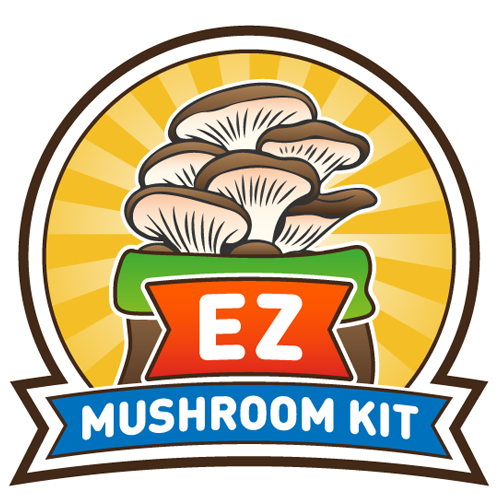Complete Guide to growing mushrooms
The Comprehensive Guide to Mushroom Growing: Master the Art of Cultivating Your Own Mushrooms
In this extensive guide, we will delve deep into the fascinating world of mushroom growing, discussing various methods, techniques, and helpful tips for a successful and rewarding cultivation experience. We will also touch on the equipment, sterilization procedures, and various types of mushrooms that can be grown in the comfort of your own home. Let’s get started!
Understanding the Life Cycle of a Mushroom
Mushrooms belong to the fungi kingdom, with a unique life cycle that sets them apart from plants. They reproduce by releasing spores, which germinate and form mycelium – a network of thread-like structures. Mycelium eventually forms the mushroom fruiting body, which releases more spores, continuing the cycle.
Selecting the Right Mushroom Species
There are numerous mushroom species that can be cultivated, but some are easier to grow than others. As a beginner, it’s essential to choose a species that is beginner-friendly and has a high success rate. Some popular species for home cultivation include:
- Oyster mushrooms (Pleurotus ostreatus)
- Shiitake mushrooms (Lentinula edodes)
- Lion’s mane mushrooms (Hericium erinaceus)
- Button mushrooms (Agaricus bisporus)
- Maitake mushrooms (Grifola frondosa)
Preparing the Mushroom Substrate
The substrate is the material in which your mushrooms will grow. It provides nutrients and a supportive environment for the mycelium to thrive. Common substrates include:
- Hardwood sawdust
- Straw
- Grain
- Coffee grounds
How to Prepare Your Substrate
- Choose a suitable substrate based on the mushroom species you plan to grow.
- Cut or shred the substrate into smaller pieces for easier colonization.
- Hydrate the substrate by soaking it in water for 12-24 hours.
- Drain excess water and sterilize the substrate by pasteurization or pressure cooking.
Inoculating the Substrate
Inoculation is the process of introducing mushroom spores or mycelium to the substrate. There are several inoculation methods, including spore syringes, liquid culture, and grain spawn.
- Spore Syringes: Inject spore solution directly into the substrate using a sterile syringe.
- Liquid Culture: Mix a live mycelium culture in a liquid medium and inoculate the substrate.
- Grain Spawn: Combine a fully colonized grain jar with the substrate, allowing the mycelium to spread.
Incubation and Colonization
During the incubation phase, the mycelium colonizes the substrate, forming a dense network. To create the ideal conditions for colonization, consider the following factors:
- Temperature: Maintain a temperature range specific to your mushroom species (usually between 65-75°F or 18-24°C).
- Humidity: Keep the substrate moist but not overly wet, as excess water can promote bacterial growth.
- Light: Provide indirect light or darkness, depending on the mushroom species’ requirements.
- Air exchange: Ensure proper airflow to prevent carbon dioxide buildup, which can slow colonization.
Fruiting and Harvesting
Once the substrate is fully colonized, it’s time to initiate fruiting. Fruiting conditions differ from incubation, with higher humidity and fresh air exchange being crucial.
- Temperature: Adjust the temperature to a slightly cooler range (60-70°F or 15-21°C) to encourage fruiting.
- Humidity: Increase humidity by misting and maintaining a humidity level of around 90-95%.
- Light: Expose the mushrooms to indirect sunlight or artificial light for 12 hours per day.
- Air exchange: Provide fresh air by fanning or using a filtered air circulation system.
Harvest your mushrooms by gently twisting and pulling them from the substrate when their caps have fully opened, and the edges start to curl upwards. Depending on the species, this could take anywhere from a few days to several weeks.
Troubleshooting Common Mushroom Growing Problems
- No mycelium growth: This issue could be due to poor spore germination, contamination, or inadequate temperature or humidity. Reassess your inoculation technique and environmental conditions.
- Slow colonization: Factors such as low temperatures, poor air exchange, or insufficient nutrients can slow down colonization. Adjust these conditions as needed.
- No fruiting: Lack of fruiting may result from inadequate temperature or humidity changes, insufficient light, or poor air exchange. Ensure that you have made the necessary adjustments to initiate fruiting.
- Contamination: Bacterial or mold contamination can ruin your mushroom cultivation. Always sterilize your equipment and substrate to minimize this risk.
Mushroom Cultivation Safety Tips
- Choose edible species: Only cultivate mushrooms you are confident are safe and edible, as some species can be toxic.
- Sterilize equipment: Proper sterilization is essential to prevent contamination and ensure successful growth.
- Wear gloves and a mask: Use personal protective equipment to minimize the risk of contamination and exposure to allergens.
- Avoid mold exposure: If you notice mold or bacterial growth, dispose of the contaminated substrate immediately to protect your health and the health of your mushrooms.
By following this comprehensive guide, you will be well on your way to mastering the art of mushroom cultivation. With patience, practice, and attention to detail, you can enjoy the rewarding experience of growing your own mushrooms at home.
A great way to start for new growers is with a ready made mushroom grow kit. This will be matched substrate with an ideal gourmet mushroom variety that loves that substrate. Sterilized and even precolonized is an option.

